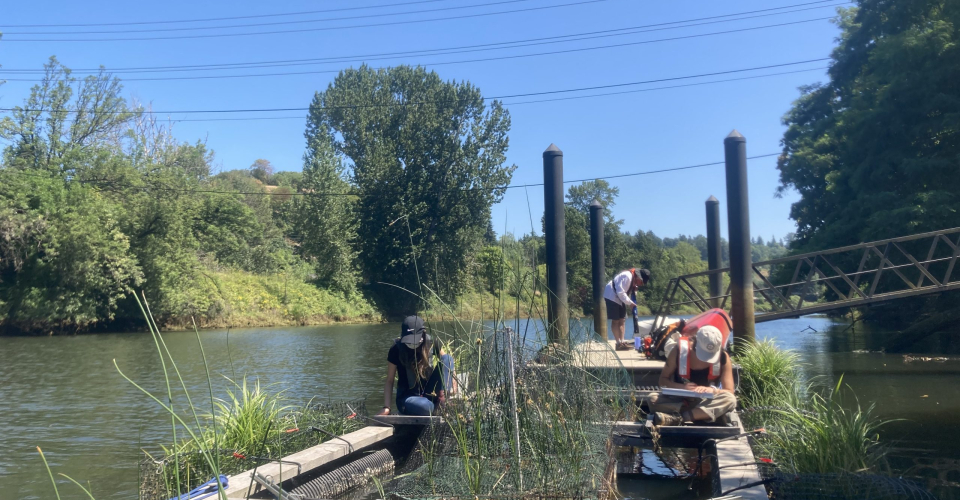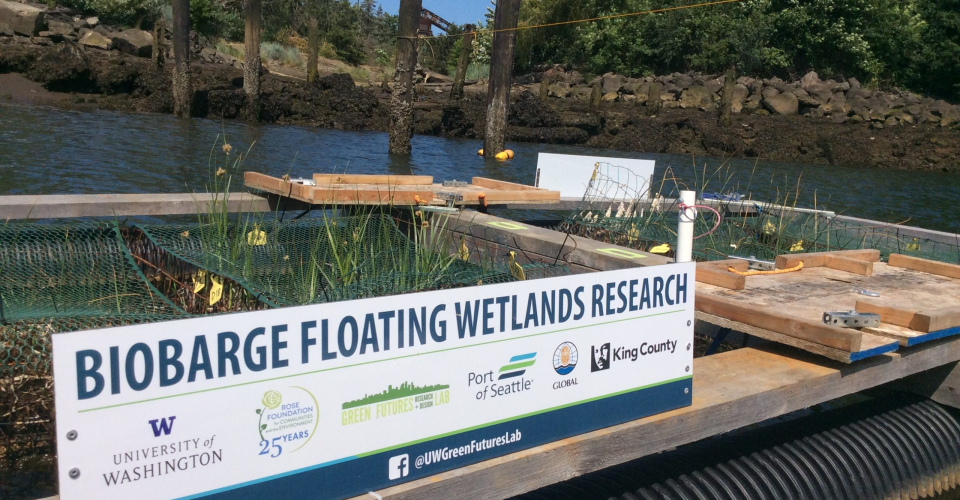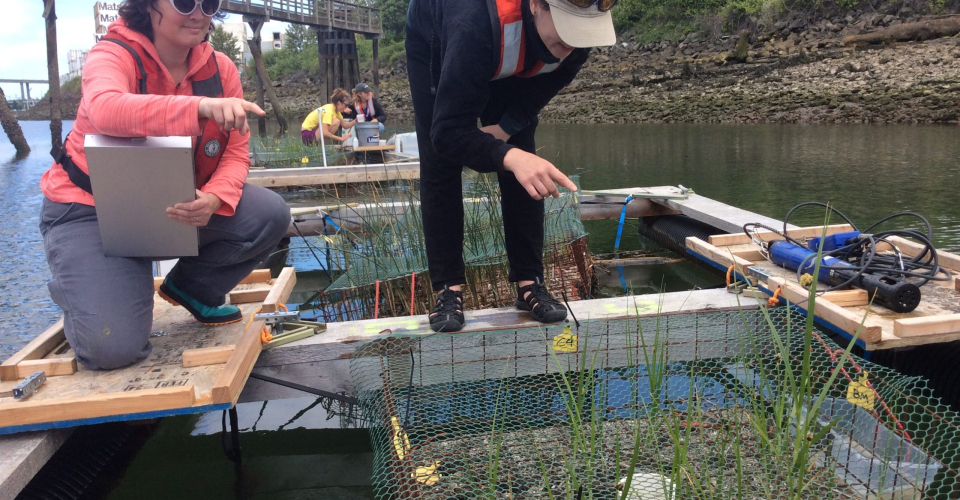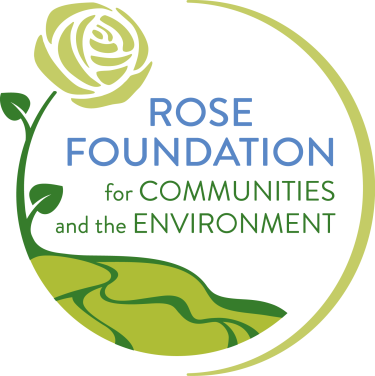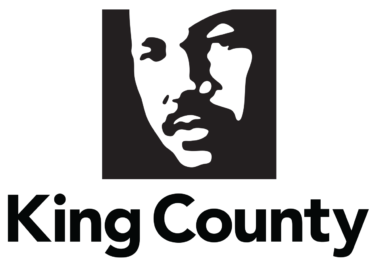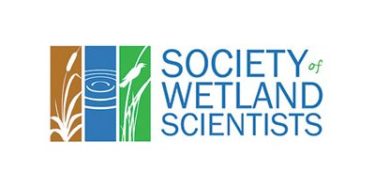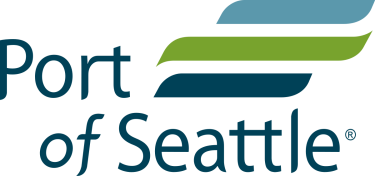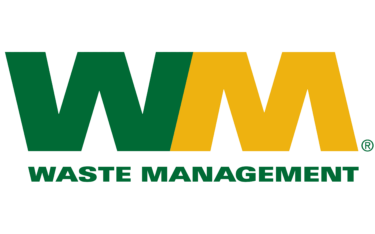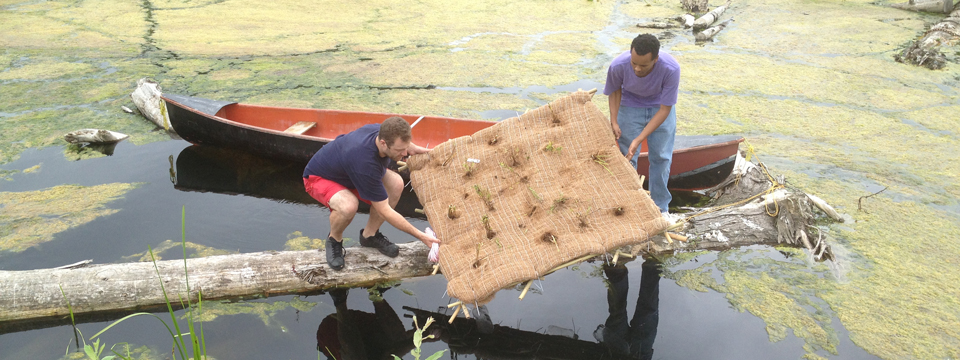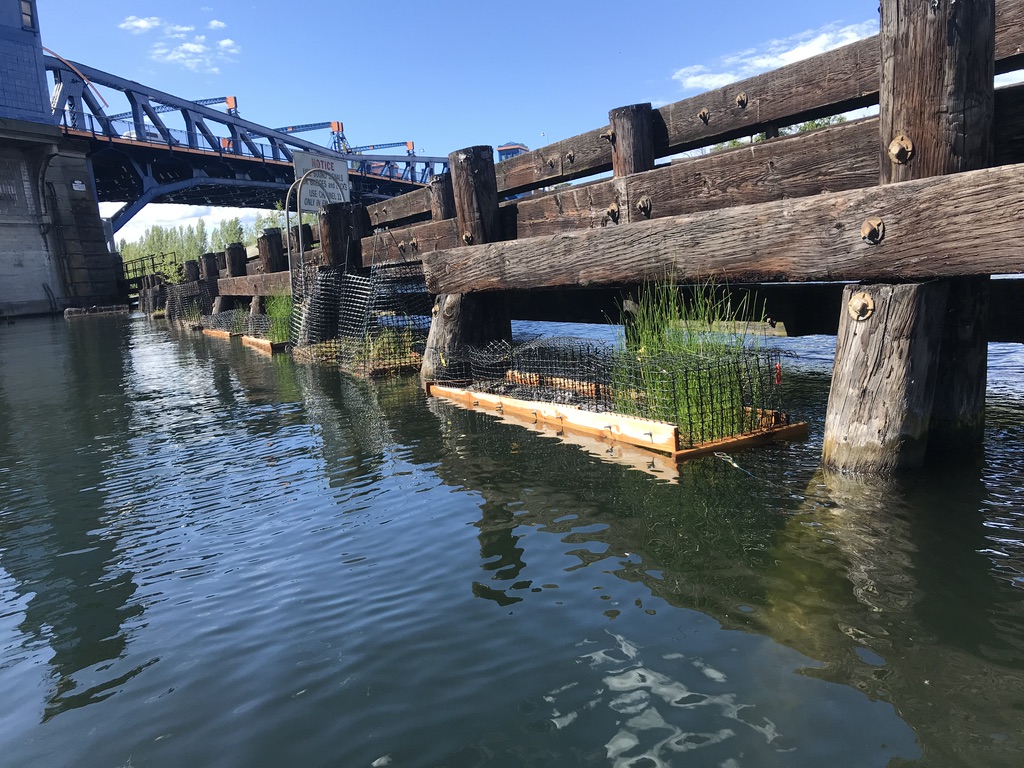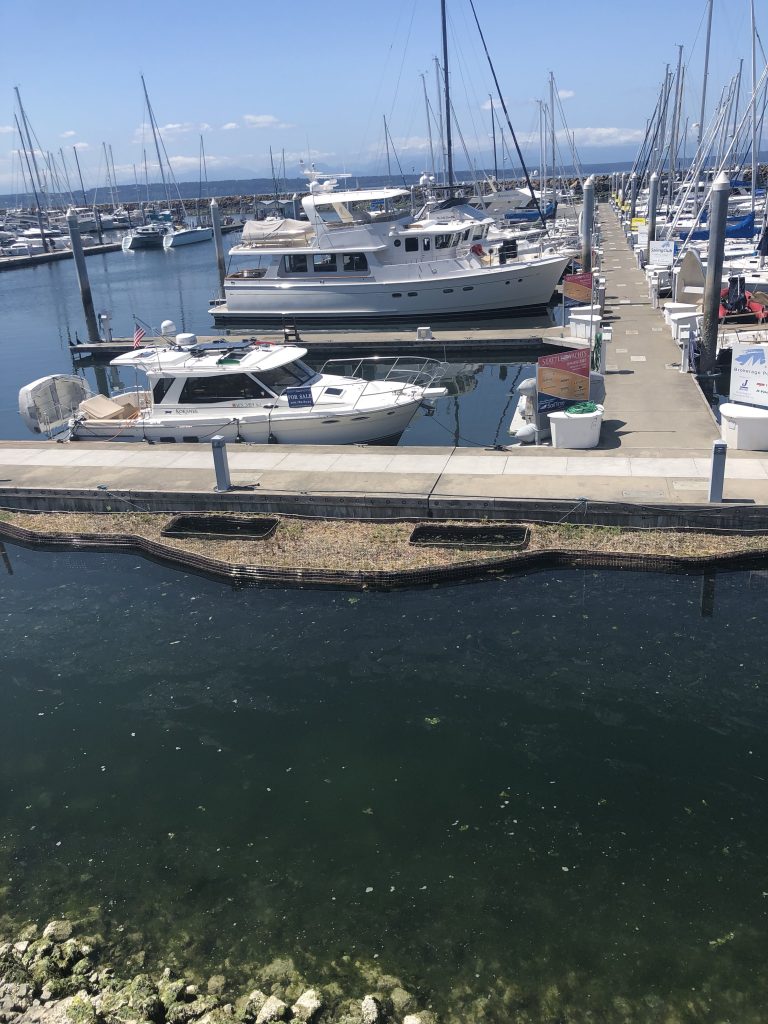October 12, 2021
Duwamish Floating Wetlands
Project Background
The lower Duwamish River and transition zone (River miles 1-10) is critical to salmon population survival and return because this is where juvenile salmon forage, shelter and physiologically transition from living in freshwater to saltwater (Ostergaard, 2014). In order for out-migrating juveniles to achieve this transition they require low gradient intertidal mudflats lined with tidal marsh, which produce a high quality diet of invertebrates. Juvenile salmonids feed on a variety of benthic aquatic invertebrates (nereid worms, gammarid amphipods) and terrestrial invertebrates (chironomids, aphids, and tethinids). (Morley et al. 2012, Cordell et al. 2008, Oxborrow et al. 2017). Juvenile salmonids also require habitats with low water velocity to hide from predators and feed (Ostergaard, 2014; Toft and Cordell, 2017).
Channelization, shoreline hardening, and habitat degradation are all factors that can contribute to salmon population decline in the Duwamish River. Studies have shown higher taxa richness in invertebrates at un-armored sites compared to armored sites (Morley et al. 2012). Furthermore, the historical contamination in the Duwamish River and other poor water quality conditions such as low oxygen and high water temperature can contribute to increased juvenile salmon mortality (Meador, 2014).
Project Goal
These floating wetlands were designed to be implemented along hardened shorelines where traditional riparian restoration is not possible, for example along docks, bulkheads, riprap boulders, and seawalls. This is the typical shoreline condition in the Lower Duwamish River and Estuary (River mile 1-5), which ranges from 40-60% of linear shoreline being bulkhead and 50-80% riprap within the first 7 miles of the river. The possible benefits the floating wetlands can provide to juvenile salmonids is production of terrestrial and aquatic invertebrates, slowing water velocity, providing shelter for salmonids and other fish, lowering temperatures, increasing dissolved oxygen, and uptaking nutrients, heavy metals and other contaminants from the river.
Project Description
The Duwamish Floating Wetlands and Community Science Project has initiated by the University of Washington’s Green Futures Lab in 2019. Phase 1 consisted of four biobarges placed in the Lower Duwamish River at T-105 and T-108. The BioBarges showed a proof of concept that these novel ecosystems could be created and added to the existing Duwamish ecosystem. The location did not allow all plants to grow due to salinity levels in the water. Additionally, it was believed that the salmon were already on their direct route out to Elliott Bay and therefore not as likely to be feeding.
Phase 2 built upon learnings of Phase 1 by moving the BioBarges further upstream to new locations. The research protocols were slightly modified to better study the salmon habitat interactions while the BioBarge design was redesigned by adding new prototypes along the longer sides of the BioBarges to remove hard shadow edges that may have been discouraging salmon from utilizing the structures.
Reports and Findings
For more information on the design process and plant growth, see an article in Restoration Ecology. The GFL team developed full reports for both 2019 and 2020 research years, with results also informing as School of Marine Affairs Capstone Report. For more information on the community science program, an article has been published in the journal Socio-Ecological Practice Research.
This project was funded by King County Waterworks, Councilperson Jeanne Kohl-Welles, the Rose Foundation, and the Port of Seattle.
Partners + Funders

